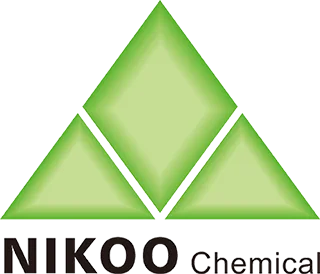Effects of Glycolic Acid (Hydroxyl Acetic Acid) Concentrations on Skin
Glycolic acid, also known as glycolic acid or glycolic acid, is a common alpha-hydroxy acid (AHA) fruit acid. Due to its high molecular weight and strong permeability, it is often used in skincare products and cosmetic procedures. Its core function is to dissolve the connections between stratum corneum cells (desion-somes), promoting the exfoliation of dead skin cells and accelerating skin turnover. However, its effectiveness and irritation are closely related to concentration, and the effects of different concentrations on the skin vary significantly, as follows:
I. Low-concentration Glycolic Acid (≤6%): Gentle conditioning, suitable for daily skincare.
Concentration range: Typically 0.5%-6%, it is commonly found in daily skincare products such as cleansers, toners, and moisturizers.
Positive Effects:
Mild Exfoliation: Low concentrations act only on the surface of the stratum corneum, gently loosening dead skin cells, reducing roughness, and promoting a more refined texture.
Supplementary Moisturization: After removing the surface layer of dead skin, the skin's absorption of subsequent moisturizing ingredients (such as hyaluronic acid and ceramides) is improved, indirectly enhancing moisturizing effects.
Improving Dullness: By promoting keratin turnover, it reduces uneven skin tone caused by keratin accumulation and slightly improves skin translucency.
Potential Irritation:
Almost no noticeable irritation. Suitable for sensitive and dry skin types (spot testing is required). A few may experience slight tightness, which usually disappears as the skin adapts.
Suitable Uses:
Daily basic care, suitable for those new to AHAs, those with sensitive skin, or those seeking long-term, gentle conditioning.
II. Medium-Concentration Glycolic Acid (6%-15%): Intensive resurfacing, requires tolerance building.
Concentration Range: Typically 6%-15%, commonly found in performance-enhancing products such as serums, masks, and exfoliating creams (some products use pH adjustment to reduce irritation).
Positive Effects:
Deep Exfoliation: Acts on the middle and lower layers of the stratum corneum, effectively improving enlarged pores and closed comedones caused by keratin accumulation, and reducing superficial fine lines (such as those caused by dryness).
Promotes Collagen Regeneration: Long-term use stimulates the synthesis of collagen and hyaluronic acid in the dermis, improving skin elasticity and firmness.
Lightens Superficial Pigmentation: Accelerates the shedding of melanin-containing dead skin cells, and has a certain effect on fading sun spots and acne scars (primarily red ones).
Potential Irritation:
Initially, you may experience slight redness, burning, peeling, or tightness (all normal reactions to keratin turnover).
Frequent use or skin intolerance may damage the skin barrier, leading to persistent redness, stinging, and even increased sensitivity.
Suitable Scenario:
Suitable for healthy (non-sensitive) skin types to improve roughness, mild acne scars, or fine lines. Start with a low frequency (1-2 times per week) to build tolerance and gradually increase use.
III. High-Concentration Glycolic Acid (>15%): Medical-Grade Peeling, Requires Professional Technique
Concentration range: 15%-70%. This product falls under the category of chemical peels (acid peels) and is commonly used in cosmetic procedures (e.g., "acid peels").
Positive Effects:
Deep Peeling: Penetrates deep into the dermis, thoroughly removing dead skin cells and addressing stubborn closed comedones, acne scars, deep wrinkles (e.g., expression lines), and severe hyperpigmentation (e.g., melasma and post-inflammatory hyperpigmentation).
Resurfacing: By stimulating dermal repair, it improves skin texture and enhances overall skin texture and firmness.
Potential Risks:
High Irritation: Significant redness, swelling, scabs, or peeling may occur after use (lasting 3-7 days). Improper application (e.g., excessive concentration or prolonged use) may cause burns, blisters, and even scarring.
Pigmentation Risk: The skin barrier is fragile after the procedure, and without strict sun protection, hyperpigmentation (dark spots) may occur.
Suitable Scenario:
Must be performed by a professional physician or aesthetician for severe acne scars, deep wrinkles, and stubborn discoloration. Skin condition must be assessed in advance (it is contraindicated for sensitive skin or those experiencing inflammatory conditions).
IV. Other Key Factors Affecting Glycolic Acid's Effectiveness
In addition to concentration, the following factors also influence its effect on the skin:
pH: Glycolic acid's rejuvenating effect relies on an acidic environment (maximum effect at pH ≤ 3.5), but the lower the pH, the greater the irritation. Some skincare products reduce irritation by adjusting the pH to 4-5, but this also reduces the effectiveness.
Skin Condition: Sensitive skin and skin with impaired skin barrier (e.g., redness, peeling, and burning) are more sensitive to glycolic acid at any concentration and should be avoided. Oily and resistant skin are more tolerant to medium to high concentrations.
Combination Ingredients: Do not use with highly irritating ingredients such as high-concentration tretinoin, high-concentration niacinamide, or salicylic acid (BHA), as this may worsen skin barrier damage.
Key considerations for using glycolic acid
Initiate gradually: Start with a low concentration (≤5%) and low frequency (once per week). Increase gradually after observing that your skin is no longer experiencing discomfort.
Adhere to strict sun protection: Skin sensitivity to UV rays increases after use, so apply SPF 30+ sunscreen daily and avoid direct sunlight.
Intensify moisturization: Exfoliation may cause dryness to your skin, so use a moisturizer containing ceramides and hyaluronic acid to repair the skin barrier.
Avoid during special times: Use with caution during inflammatory skin conditions (such as breakouts and allergies) and during pregnancy/breastfeeding. Consult a doctor is recommended.
In short, the effectiveness and risks of glycolic acid are positively correlated with increasing concentration: low concentrations are suitable for gentle daily conditioning, medium concentrations are suitable for functional improvements, and high concentrations require professional aesthetics. When choosing a glycolic acid, consider your individual skin condition and prioritize safety over blindly pursuing a high concentration.

